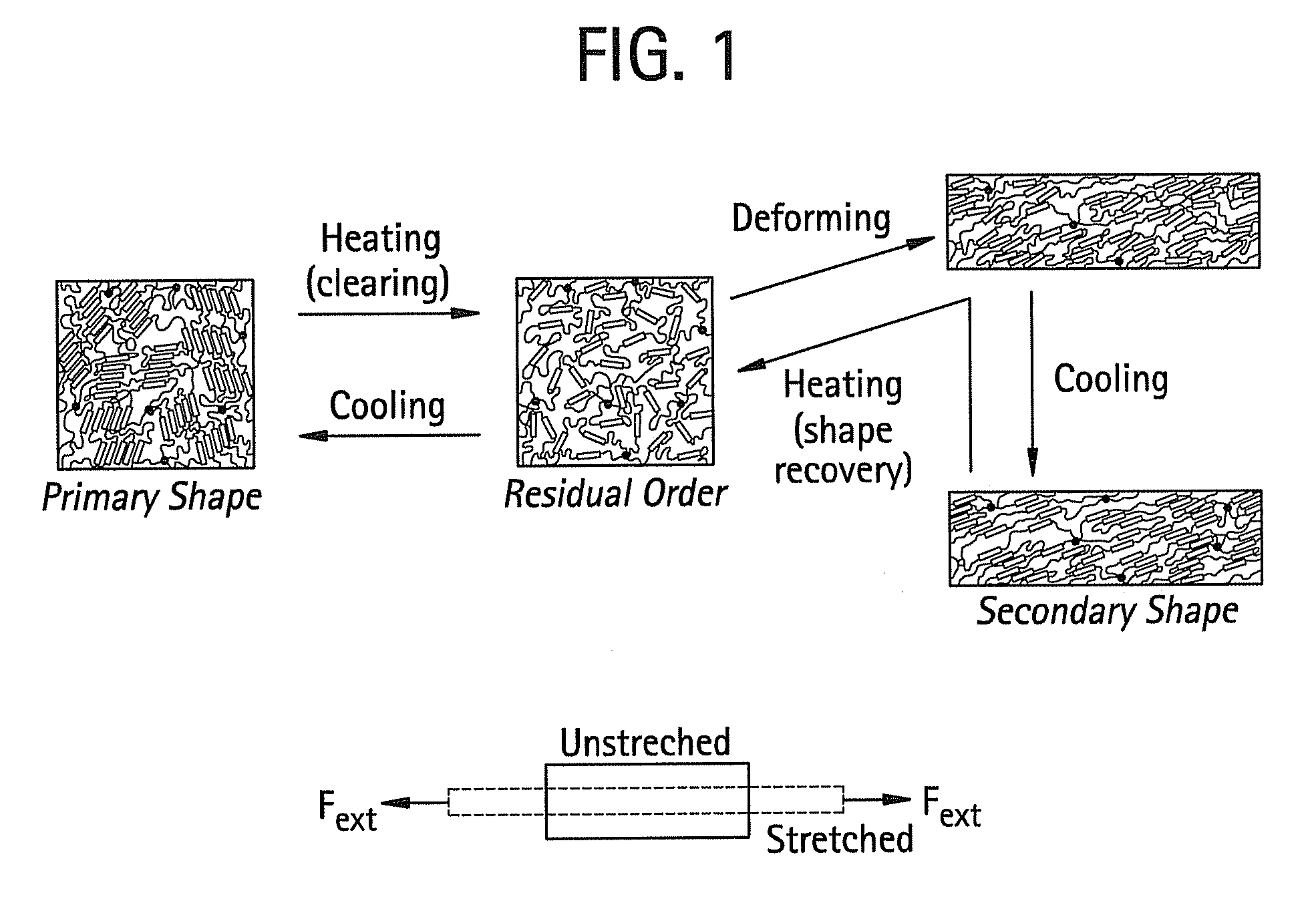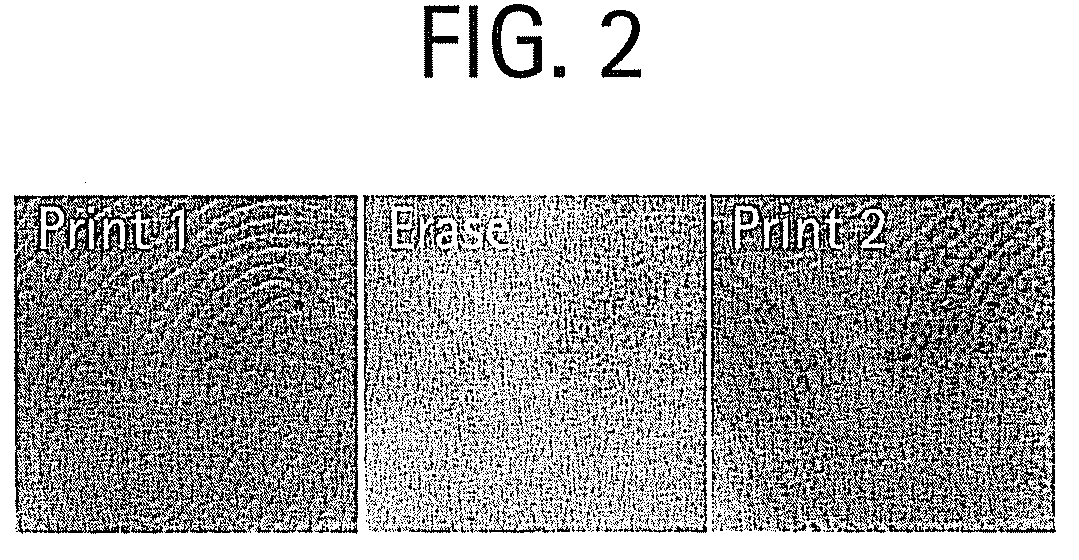Shape memory main-chain smectic-c elastomers
a main-chain smectic-c, elastomer technology, applied in the field of smectic-c liquid crystalline elastomers, can solve the problems of inability to synthesize lces exhibiting the ability of shape memory elastomers possessing low transition temperature, and achieve excellent ability
- Summary
- Abstract
- Description
- Claims
- Application Information
AI Technical Summary
Benefits of technology
Problems solved by technology
Method used
Image
Examples
example 1
[0048]This example generally describes the synthesis of mesogenic diene monomers. Scheme I represents the synthetic route followed for the preparation of the all the mesogenic dienes. The synthesis and characterization of some mesogenic dienes with unsubstituted and methyl-substituted central rings (i.e., some “n” H and “n” Me mesogens) has been previously reported. See, for example, B. Donnio, H. Wermter, and H. Finkelmann, Macromolecules 2000, 33, 7724-7729; G. Kossmehl, B. Gerecke, N. Harmsen, F. Schroeder, and H. M. Vieth, Molecular Crystals and Liquid Crystals Science and Technology, Section A: Molecular Crystals and Liquid Crystals 1995, 269, 39-53; G. Kossmehl, B. Gerecke, N. Harmsen, H. M. Vieth, and D. Wolff, Molecular Crystals and Liquid Crystals Science and Technology, Section A: Molecular Crystals and Liquid Crystals 1998, 317, 1-21; A. Shiota and C. K. Ober, Journal of Polymer Science, Part A: Polymer Chemistry 1996, 34, 1291-1303; and S. V. Arehart and C. Pugh, Journal...
example 2
[0055]This example describes the synthesis and characterization of shape memory main-chain smectic-C elastomers. Generally, the elastomers may be prepared by catalyzed hydrosilylation of a reaction mixture comprising (a) a single mesogen or a mixture of 2 or more mesogens, (b) a crosslinking agent, and (c) a bis(silyl hydride) compound. In these experiments, the mesogens (a) were selected from the compounds described in Example 1, the crosslinking agent (b) was tetrakis(vinyldimethylsilyloxy)silane, and the bis(silyl hydride) compound (c) was hydride-terminated polydimethylsiloxanes with average degree of polymerization 7 (i.e., with seven repeating dimethylsiloxane units but eight total silicon atoms; obtained from Gelast, Inc. or Aldrich). Hydrosilylation reactions catalyzed by platinum(0)-1,3-divinyl-1,1,3,3-tetramethyldisiloxane complex in xylenes are known. See, for example, B. Donnio, H. Wermter, and H. Finkelmann, Macromolecules 2000, 33, 7724-7729; G. Kossmehl, B. Gerecke, N...
PUM
| Property | Measurement | Unit |
|---|---|---|
| thickness | aaaaa | aaaaa |
| glass transition temperature | aaaaa | aaaaa |
| weight percent | aaaaa | aaaaa |
Abstract
Description
Claims
Application Information
 Login to View More
Login to View More - R&D
- Intellectual Property
- Life Sciences
- Materials
- Tech Scout
- Unparalleled Data Quality
- Higher Quality Content
- 60% Fewer Hallucinations
Browse by: Latest US Patents, China's latest patents, Technical Efficacy Thesaurus, Application Domain, Technology Topic, Popular Technical Reports.
© 2025 PatSnap. All rights reserved.Legal|Privacy policy|Modern Slavery Act Transparency Statement|Sitemap|About US| Contact US: help@patsnap.com



